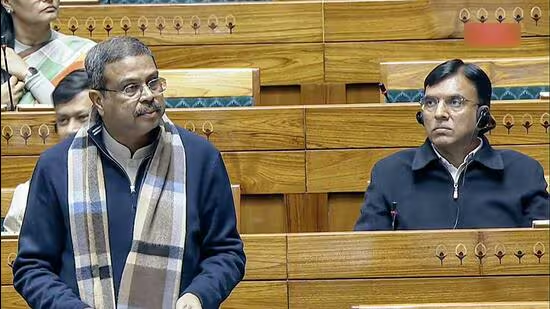Description

Copyright infringement not intended
Picture Courtesy: www.gconnect.in
Context: The President of India advocates for an All India Judicial Service to recruit talented individuals nationwide, fostering talent from lower to higher levels and offering opportunities for underrepresented social groups, aiming to create a more inclusive and skilled judiciary.
All India Judicial Services
- The idea of creating an All India Judicial Services (AIJS) has been debated for a long time in India. The AIJS is a proposed service that would recruit and train judges for the lower judiciary through a common entrance exam conducted by the Union Public Service Commission (UPSC).
- The main objectives of the AIJS are to improve the quality, efficiency and accountability of the judicial system, to ensure uniformity and transparency in the recruitment and training of judges, and to address the huge vacancies and pendency of cases in the lower courts.
- The AIJS has been supported by various committees and commissions, such as the Law Commission of India, the National Judicial Pay Commission, the Malimath Committee and the National Commission to Review the Working of the Constitution.
- The Supreme Court of India has also endorsed the AIJS in several judgments, such as All India Judges Association v/s Union of India (1992), Malik Mazhar Sultan v/s UP Public Service Commission (2006) and All India Judges Association v/s Union of India (2014).
- The Constitution of India also provides for the creation of the AIJS under Article 312, which empowers the Parliament to enact a law for this purpose. A resolution needs to be passed in the Rajya Sabha with a special majority (not less than two-thirds of the members present and voting).
|
Attempts and Status
●Discussions on centralizing the judiciary began in 1958 and have been reiterated in subsequent reports, parliamentary committees, and even a Supreme Court directive in 1992.
●Despite efforts like a comprehensive proposal in 2012, discussions in conferences of Chief Ministers and Chief Justices in 2013 and 2015, and meetings chaired by the Minister of Law and Justice in 2017, a consensus remains elusive due to differing opinions among major stakeholders.
|

Arguments in Support of the AIJS are:
- It would strengthen the federal structure and autonomy of the states, as they would still have a say in the selection and posting of judges through a collegium system involving representatives from both the centre and the states.
- It would enhance the diversity and representation of the lower judiciary, as it would ensure a fair and merit-based selection process that would provide equal opportunities to candidates from all regions, backgrounds and communities.
- It would create uniformity and parity among the judges of the lower judiciary, as they would all be governed by common rules and regulations regarding their service conditions, transfers and promotions.
- It would help in solving the problems of vacancies and pendency of cases in the lower courts, as it would attract more talented and motivated candidates to join the judicial service, which would be better trained and equipped to handle complex cases.
Arguments against the AIJS are:
- It would infringe upon the federal structure and autonomy of the states, as they would lose their power to appoint and control their judges.
- It would affect the diversity and representation of the lower judiciary, as it would favour candidates from urban and elite backgrounds over those from rural and marginalized sections.
- It would create a hierarchy and disparity among the judges of the lower judiciary, as those recruited through the AIJS would enjoy higher status, pay and perks than those recruited through the state judicial services.
- It would not solve the problems of vacancies and pendency of cases in the lower courts, as these are mainly caused by inadequate infrastructure, staff and resources, rather than by a lack of qualified judges.
|
Challenges and Reasons for Non-Implementation
●Constitutional Framework: The appointment of district judges falls under the jurisdiction of states as per Articles 233 and 234. Implementing a centralized recruitment system like AIJS requires consensus among both states and the central government, posing a constitutional challenge.
●Lack of Consensus among Stakeholders: Over the years, discussions among Chief Ministers, Chief Justices, and governmental bodies have failed to reach a unanimous decision. Divergent opinions among stakeholders, including state governments and High Courts, hinder progress.
●Resistance to Change: The existing system has been in place for years, and there might be resistance to change from those invested in the current processes. Implementing AIJS would necessitate a significant shift.
●Complexities in Regulations: Discussions on eligibility criteria, age limits, selection methods, qualifications, and reservations have been ongoing. Aligning these aspects among various states and stakeholders has proven challenging.
|
Conclusion
- The AIJS is a long-pending reform that has been repeatedly recommended by various experts and authorities. It is time that it is implemented with due consultation and consensus among all stakeholders. The AIJS would not only benefit the judicial system but also serve the larger interests of justice, democracy and development in India.
Must Read Articles:
All India Judicial Services: https://www.iasgyan.in/daily-current-affairs/all-india-judicial-services
|
PRACTICE QUESTION
Q. What are the potential benefits and challenges associated with implementing the All India Judicial Service, and how might it impact the efficiency and independence of the judiciary in the country?
|










